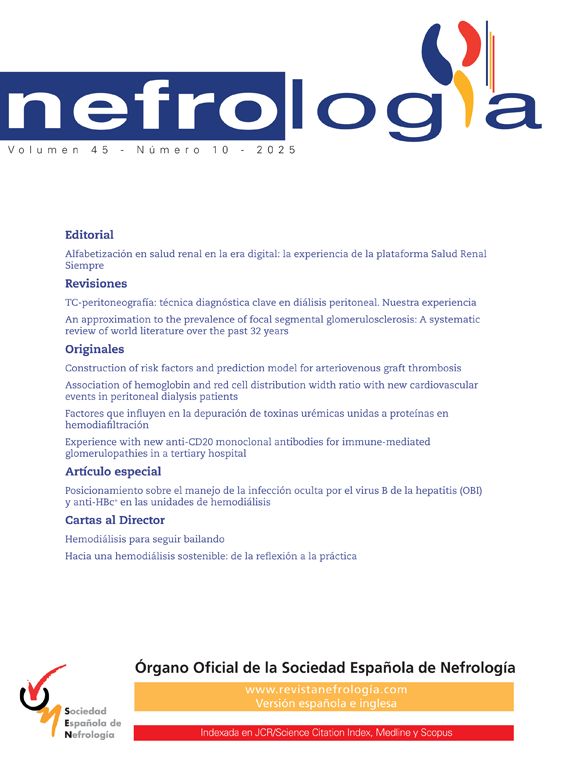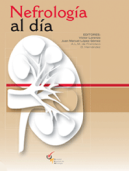To the Editor,
We read with great interest the paper published in the journal NEFROPLUS by Dr Montoya et al.1 in relation to Page kidney. This is an excellent review describing this rare condition in great detail, both diagnostically and therapeutically.
In this letter, we would like to provide additional information to that already offered by the authors regarding an ultrasound finding of interest that we have recently described.2
In our study we describe a transplant patient under antiplatelet aspirin therapy that underwent percutaneous nephrostomy to resolve an ureterovesical stenosis while definitive surgery was being planned. At 48h of placing the nephrostomy tube, oliguria and impaired renal function were noted. Blood pressure was unchanged. Two-dimensional ultrasound revealed a large subcapsular haematoma, and the Doppler colour ultrasound a preserved renal perfusion with normal arterial and venous flow. The pulsed Doppler ultrasound showed the existence of an increase in intrarenal resistance with reversal of diastolic flow throughout the kidney. The patient underwent surgery within 24 hours. The subcapsular haematoma was evacuated, and therefore, diuresis was recovered, renal function was normalised and the Doppler pattern returned to normal.2
Diastolic flow reversal in pulsed Doppler ultrasound is traditionally characteristic of renal vein thrombosis.3 However, it also can be presented, reversibly, by acute rejection and severe acute tubular necrosis,3 anticalcineurinic toxicity4 and, in our experience, Page kidney.3
Lastly, it is of great interest to perform a Doppler ultrasound after each renal intervention with a view to diagnose associated complications. It is also important to know that the reversal of diastolic flow in the Doppler does not necessarily indicate that there is a renal vein thrombosis.






